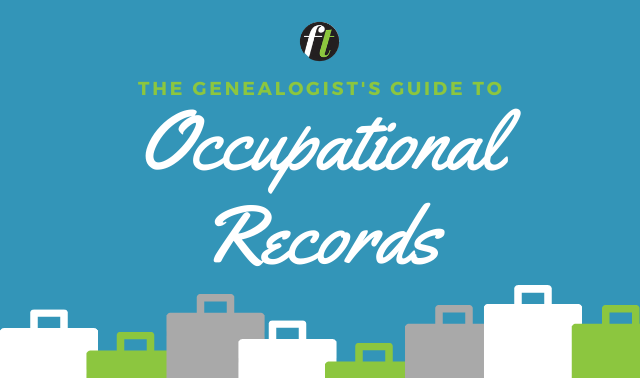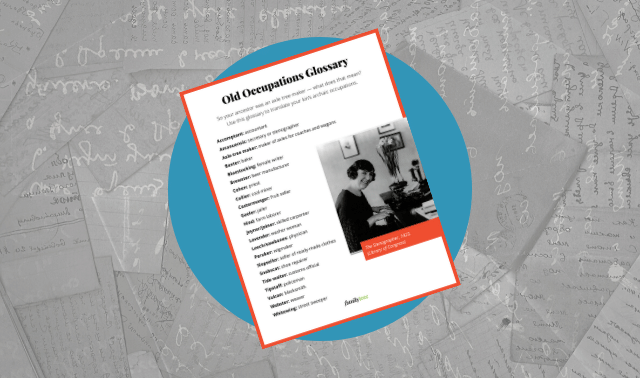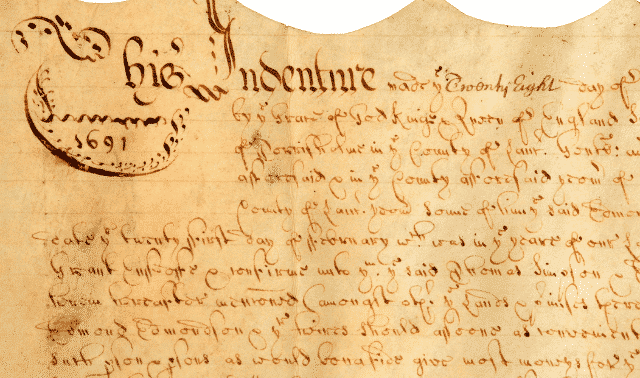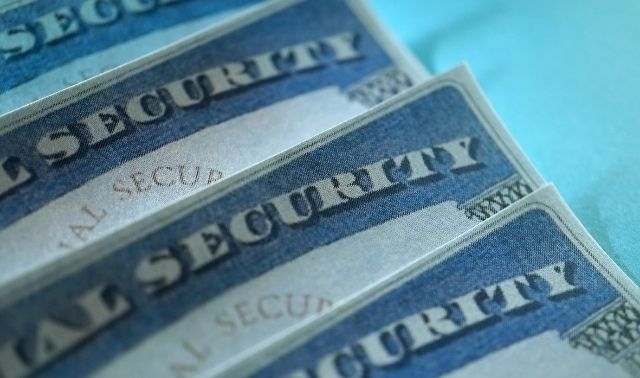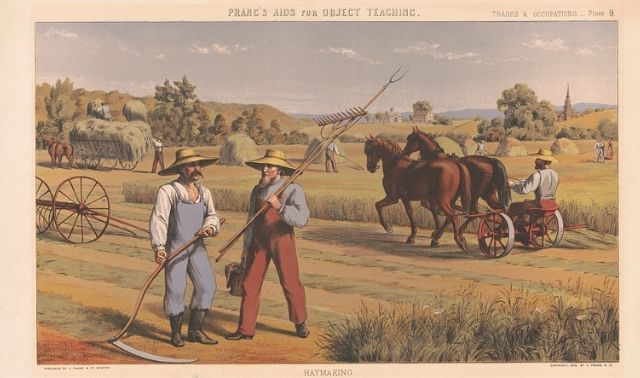
Jump to:
General
Government
Medical
Mining
Railroad
Religious
Retail
Teaching
General
Q: Is there any place that lists employees for any given company? For instance, if I think somebody worked at a certain company in 1967, is there any source that would have a list of the employees who worked at that company during that year? I have racked my brain, but come up with zero.
A: For privacy reasons, employers do not publish names and addresses of their employees for public distribution. An internal telephone directory may list most employees, but these are private records and are probably not archived. You can, however, determine or verify a person’s place of employment by consulting a city directory, which lists the name, address and employer of individuals. Whether a city directory was published for your city and year will depend upon the city. For example, Chicago, New York City and Los Angeles discontinued publication of city directories in 1928-29, 1933-34 and 1942 respectively. See Chapter 3 in Locating Lost Family Members & Friends (Betterway Books) for details on how to use and locate city directories.
Answer provided by Kathleen W. Hinckley. A version of this article appeared in the August 2001 issue of Family Tree Magazine.
Government
Q: In searching the 1930 census for my mother’s family, I discovered her eldest brother was the census enumerator for that district. How can I find out more about his employment as an enumerator? He died in 1942.
A: Some personnel records exist for civilian federal employees — including census enumerators — but few were compiled before 1911. A descendant can request a search for a deceased employee’s records from the Civilian Personnel Records Center. Provide the person’s full name used during employment, birth date, Social Security number (if applicable), approximate hire and “separation” (or termination) dates and a copy of the death certificate. You must provide written consent from any living individual whose records you request. (A National Archives and Records Administration employee informed me that the records center may not have files for census enumerators, though.)
The National Archives does keep some employee data in the files of various departments. For details, see Guide to Federal Records in the National Archives and Guide to Genealogical Research in the National Archives of the United States (National Archives Trust Fund).
For records on enumerators, consult the National Archives’ Preliminary Inventory of the Records of the Bureau of the Census, Inventory 161. Also, roll 1 of National Archives microfilm T1224, Descriptions of Census Enumeration Districts, 1830–1950, reports 1830 and 1840 enumerators’ names, districts and pay.
To learn what your uncle’s work might have been like, read this article about taking the 1930 census and the Census Bureau’s “Measuring America: The Decennial Censuses From 1790 to 2000“.
The American State Papers, a collection of congressional documents from 1789 to 1838, has lists of early civilian employees. Click Browse American State Papers, then look in the two-volume Class X: Miscellaneous for 1793 and 1802 lists (volume 1, pages 57–68 and 260–319) and the 1816 register (volume 2, pages 307-351). The 1802 and 1816 lists also include military and naval officers.
Answer provided by Emily Anne Croom. A version of this article appeared in the August 2004 issue of Family Tree Magazine.
Q: I was able to obtain over 30 pages of my great-uncle’s records from working for the WPA in Chicago. Is there a way to learn more about the projects he worked on?
A: The National Archives also has an extensive collection of WPA records. You can view a summary of all the relevant holdings online. The Library of Congress’ American Memory collection contains more than 2,500 items you can find with a simple search for WPA. Another good resource, accessible in part online, is the Gjenvick-Gjønvik Archives, which holds a number of original WPA documents, books and other materials. The teaching resource The New Deal Network also has a collection of photos and documents, including the WPA Workers’ Handbook, published by the WPA in 1936.
Answer provided by David Fryxell. A version of this article appeared in the December 2015 issue of Family Tree Magazine.
Medical
Q: My great-great-grandfather was supposedly a physician in the mid-1800s. He left Pennsylvania for Ohio, and died in 1870. How can I research where he got his education and verify that he was a physician?
A: Start with the American Medical Association’s (AMA) Deceased Physician File, 1864-1970. In these records, you may find an obituary and other biographical information, such as specialties and medical schools your ancestor attended. The file is available on FamilySearch (search results may include some Canadian doctors as well).
To research physicians who practiced before 1864, look for the two-volume Directory of Deceased American Physicians, 1804-1929 (American Medical Association, out of print); you’ll find it at many libraries or on Ancestry.com.
If you don’t find your ancestor in the AMA files, check city directories from your ancestor’s towns to see what medical schools were in operation. The College of Philadelphia (later the University of Pennsylvania), which opened in 1765, was the first medical school in the United States. Ohio had a number of schools, including the Medical College of Ohio. It was founded in Cincinnati in 1819 and merged with the University of Cincinnati in 1896. (A different Medical College of Ohio was established in 1964 in Toledo.) Check online to see if the colleges still exist or have changed names. If the schools are still around, write to their registrars to inquire about your ancestor’s records.
Answer provided by Sharon DeBartolo Carmack. A version of this article appeared in the October 2004 issue of Family Tree Magazine.
Mining
Q: Peter Zecherle, the brother of my fourth great-grandmother, moved from Wisconsin to Nye County, Nev., around 1875. The 1875 Nevada state census lists him as a miner. In 1878, the Virginia City, Nev., directory says he’s an amalgamator for “Cal. Mill.” What did an amalgamator do? What was Cal. Mill?
A: Virginia City was a mining boomtown created by the 1859 discovery of the Comstock Lode, under the eastern slope of Mount Davidson in what’s now Nevada. It was the first major silver ore find in the United States. Besides generating vast fortunes and boosting the growth of Nevada and San Francisco, the Comstock Lode spurred mining innovations such as the “Washoe pan process” for extracting silver.
The Comstock’s richest silver vein, known as the “Big Bonanza,” was found in 1873 at 1,167 feet and continuing down for 400 feet. Two existing mines, the Consolidated Virginia and the California, tapped into the Bonanza. By 1879, they’d produced $105 million in silver, making them the richest mines in the history of the Comstock Lode.
Mining companies built a mill for each mine to extract those millions of dollars’ worth of silver. The California Pan Mill (“Cal. Mill” in the city directory), built at a cost of $500,000, was the largest ever built on the Comstock Lode; it could process 380 tons of ore a day. Both mills used the Washoe process. Developed in the 1860s, the process used iron tanks (“pans”) with mechanical agitators. Each tank could hold 1,200 to 1,500 pounds of ore crushed to the consistency of sand. Water would be added to the ore to make a pulp, along with 60 to 70 pounds of mercury and a few pounds each of salt and copper sulfate (“bluestone”). A round iron plate called a muller, mounted on a vertical shaft, was lowered into the tank to agitate the mixture and further grind it.
The mercury combined with (“amalgamated”) the silver so it could be removed; heat that was applied with steam pipes would “cook off” the mercury. The California Pan Mill contained 46 pans for processing ore. Workers in the amalgamation process were known as “amalgamators.”
Virginia City was the most important city between Denver and San Francisco at the time your relative lived there. The Bonanza years ended in 1879, although mining continued, with another $50 million produced by 1920. If Abraham left a widow, try to link her to Joel. Work sideways, too: If you know the names of Joel’s brothers and sisters, look for evidence that Abraham was their father. In North Carolina, the state archives and state library’s Digital Collections include marriage and death notices, family Bibles, cemetery records and submitted genealogies. Also check the links on FamilySearch.
Answer provided by David Fryxell. A version of this article appeared in the January/February 2019 issue of Family Tree Magazine.
Q: How do I find records on workers in coal mines? I am looking for those in Ohio.
A. This is a search that requires some tenacity—but it can work! You might find payroll information, employee records, accident reports or just company financial records and correspondence. First, check censuses to verify the person’s locality and occupation.
Then, consult old histories and newspapers to see what mining companies operated there. Check the catalogs of the Ohio State Archives and the pertinent Ohio Network of American History Research Centers library. An obituary, military draft registration or Social Security application form (SS-5) might provide the name of the company your ancestor worked for.
Depending on who last owned the mine, employment records might not have survived, or they may be in another state. Once you have a company name, consult the National Union Catalog of Manuscript Collections (NUCMC)—which catalogs about 72,300 manuscript collections of personal, family and corporate papers—to see if you can find the company’s records. The state archives or a county historical society also might have records relating to coal mines.
A federal documents depository library will likely have some state and federal published reports about mines, such as safety and accident reports. If your ancestor was involved in a mining accident, look for newspaper articles (including those of the labor press) about the incident.
Answer provided by Paula Stuart Warren
Railroad
Q: My great-grandfather worked for the B&O Railroad. What railroad records could I get with information about him?
A: Start with the US Railroad Retirement Board. Founded in 1936, this agency administers federal retirement benefits to railroad workers and their families. For a fee, the agency will look up the records of anyone now deceased who worked for the railroads (excluding temporary workers) after 1936. To make the request, you’ll have to provide your great-grandfather’s full name and dates of birth and death or his Social Security number—which you can search for in the Social Security Death Index if he died after 1962.
The Baltimore & Ohio Railroad Museum’s Hays T. Watkins Research Library has some records for employees whose payroll cards were in the Baltimore office; the collection spans 1905 to 1971. (A 1904 fire destroyed earlier records.) With the worker’s full name and date of birth, library staff will conduct a search for a fee. Aside from birth dates, the records don’t include genealogical information, but they may give his job title, division, department, station, salary, and date of retirement, resignation or dismissal.
Three other potentially useful sources are the Ancestry.com Railroad Workers message board (scroll down to Railroad Workers), Cyndi’s List and the American Railroads mailing list, whose archives you can browse or search.
If your ancestor was involved in a serious accident or was more than a junior employee, other records could hold additional information—for example, check newspapers for reports of an accident.
Answer provided by Peter D. A. Warwick. A version of this article appeared in the May 2008 issue of Family Tree Magazine.
Q: My uncle was a B&O Railroad engineer from the 1930s to the ’50s. Family legend has it that he “drove” one of President Eisenhower’s victory trains. B&O says its records are gone, and the Eisenhower Presidential Library says train engineers weren’t recorded. How can I prove this story?
A: Although some wonderful railroad records do exist, the Baltimore & Ohio (B&O) Railroad is one of the sad stories. According to the B&O Railroad Historical Society, many late-1800s and early-1900s records were lost due to moves and file purging as the company changed ownership.
You may, however, find that items such as payroll records, letters and photographs are still around. The Baltimore & Ohio Railroad Museum in Baltimore, Md., holds some corporate records, as well as the company’s employee publication, B and O Magazine (renamed Baltimore & Ohio Magazine in 1920). Use Google to find the magazine in repositories and on auction websites such as eBay.
The Railroad Retirement Board, a government agency begun in the 1930s to administer railroad workers’ benefits, also may have records on your uncle. Staff will search its records for a fee.
Indexes to major newspapers might help you narrow the dates for victory trains your uncle could have driven. Then look for information in newspaper stories, starting with his hometown papers. Also read up on the B&O in publications such as Railroad History Magazine, published by the Railway & Locomotive Historical Society. Even if your uncle’s name isn’t mentioned, you may find helpful historical background on the victory trains.
The Eisenhower Presidential Library staff knows its records, but you’ll feel better if you check for yourself, so study the library’s online finding aids. Who knows—your uncle’s name could be buried in correspondence about travel arrangements. If you do find a promising collection, be prepared to visit the library and search through records box by box, page by page, without the benefit of an index.
Answer provided by Paula Stuart Warren. A version of this article appeared in the February 2005 issue of Family Tree Magazine.
Q: My great-grandfather supposedly helped build the Canadian Pacific Railway. Is there any way to find out more about that part of his life?
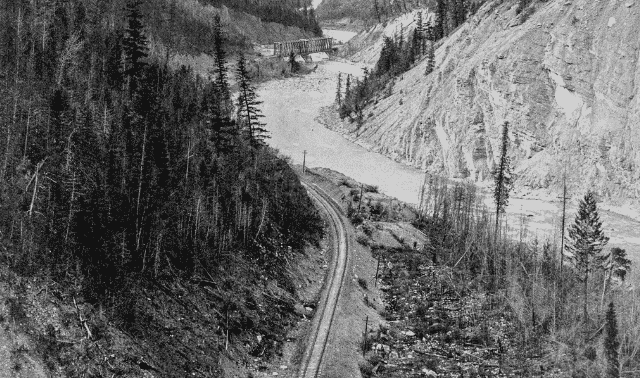
A: Canada was still a sparsely populated country when the Canadian Pacific Railway (CPR) incorporated in 1881. Building that first cross-country rail link took thousands of workers and a massive effort.
In 1885, CPR worker Donald A. Smith altered the course of the country’s history by driving the final spike into the transcontinental railroad, which ultimately opened up the Canadian West to settlement. You can read a brief history on the CPR archives website. You also can read about the CPR on the Atlas of Alberta Railways site.
If your ancestor worked on the railroad, you’ll be especially interested in the archives’ collection of historical images, documents, publications and artifacts, plus materials on topics such as tourism, immigration and colonization.
Although it’s a private collection, the CPR archives in Montreal provides researchers with fee-based services or on-site access on a case-by-case basis. You’ll need to submit a written request to arrange a visit.
You’ll find more online resources for researching rail workers here and on Cyndi’s List. For example here’s an 1885 statement of various CPR workers’ names, salaries and periods of service in British Columbia, from the Government of Canada Sessional Papers.
We also recommend a couple of books: Canadian Railway Records: A Guide for Genealogists by Althea Douglas and J. Creighton Douglas (Ontario Genealogical Society) offers a glossary, chronology, and an introduction to online sources. See more history in Canadian Pacific Railway (MBI Railroad Color History) by Tom Murray (Voyageur Press).
Finally, you’ll find some CPR and other railway tips on the Library and Archives Canada website.
Answer provided by Lisa A. Alzo
Q: Where do I find the records of deceased railroad employees who received pensions/annuities? I’m probably wrong, but I seem to recall this system was similar to the current social security program.
A: Records of railroad employees who received pensions after 1935 may be available through the US Railroad Retirement Board.
This agency does not have records for people who died or retired from the railroad before 1936. If your ancestor died or retired before 1936, it is possible that the railroad for which he worked might have records related to pension or death benefits. In this case, you must identify the location of that railroad company’s archives to track down the records.
You may run into two problems in this search. The records of many of the hundreds of railroad companies that existed in the US no longer survive. In addition, even companies that retain some personnel records may have destroyed earlier ones. But it’s worth a try. Good luck with your research!
Answer provided by Christine Crawford-Oppenheimer
Q: My ancestor died in 1926 while working for the Lehigh Valley Railroad. Where can I find records about this?
A: The Lehigh Valley Railroad was known as the Delaware, Lehigh, Schuylkill and Susquehanna Railroad when it was founded in 1846. The railroad’s name changed in 1853, and its tracks in its area of dominance—eastern Pennsylvania, New York and New Jersey—became known as the “Route of the Black Diamond” because the railway transported so much anthracite coal from northeast Pennsylvania.
Aaron McWilliams of the Pennsylvania State Archives says that his repository has some employee records in its Lehigh Valley Railroad Collection, but a better place to start is the Interstate Commerce Commission’s (ICC) Historic Railroad Investigation Reports. These documents provide a great deal of information on both fatal and nonfatal railroad accidents. Reports from 1911 to 1994 are online. A quick search turns up two fatal accidents involving Lehigh Valley Railroad employees in 1926.
“If you have no luck with the ICC reports, you may want to try the Lehigh Valley Railroad Minutes and reports [in the Pennsylvania State Archives collection listed above], although they generally do not provide much information, if any,” McWilliams says. “Local newspapers tend to be a better source than either the minutes or the reports.” Use Chronicling America to identify local newspapers to search.
Answer provided by James M. Beidler. A version of this article appeared in the March 2010 issue of Family Tree Magazine.
Religious
Q: The godmother of my father and his brothers was a nun. I believe she was a friend of his parents, or even related to them in some way. I don’t know her order, or if she was an Anglican or Catholic nun. Is it possible to trace a nun? If so, where do I start?
A: Records of family members—such as nuns, priests and religious brothers—are often gold mines of family history. Because they didn’t have children, they’re more likely to be in close contact with parents, siblings, nieces and nephews, leaving letters or other personal papers. And the religious order’s biographical records usually include family history information.
Start by learning the denomination—Catholic or Anglican—of the church where your father and his brothers were baptized, then find out if that church has any information on the nun. Otherwise, assume that the woman you’re seeking was a Catholic nun, since more women joined Catholic orders than Anglican.
Nuns could belong to a number of religious orders, and as with secular women who married, they changed their names. A nun generally takes on a religious name when she joins an order, and it’s this name you’ll find her listed under in records such as censuses.
Unfortunately, to learn much about your religious relative, you’ll need to determine which order she belonged to. Start with family stories and look for home sources such as obituaries, funeral cards, letters and diaries. In an article in The Irish at Home and Abroad (available at libraries with Irish-American genealogy collections and the FamilySearch Library, Kyle Betit suggests you try to learn names of religious orders whose members served in the family’s hometown, parishes and schools, as well as orders other relatives joined.
Also look for resources that give the nun’s name followed by initials, such as OSB for the Order of St. Benedict or SSJ for the Sisters of St. Joseph. Read up on the history of women’s religious orders in George C. Stewart Jr.’s Marvels of Charity: History of American Sisters and Nuns (Our Sunday Visitor).
Answer provided by Sharon DeBartolo Carmack. A version of this article appeared in the February 2006 issue of Family Tree Magazine.
Retail
Q: My great-great-grandmother owned a variety store from the 1880s through the 1940s, but we’re not sure where in Massachusetts the store was located. What records can I use to learn more about the business?
A: First, make an educated guess of the city where your great-great-grandmother lived-the store was likely nearby. Ask relatives, examine family papers and search the census for clues. Then consult these records:
- City directories: Published in the late 1800s and early 1900s for most cities and towns, these listings of businesses and residents resemble today’s telephone books. Large public libraries often carry printed or microfilmed directories.
- Court records: Your ancestor probably had to pay taxes on her property and obtain a business license. Use a reference book such as The Family Tree Resource Book for Genealogists (Family Tree Books) to learn the location of court records from her town and era-good bets are the courthouse or state archives. And do a place search of the FamilySearch catalog.
- Sanborn fire-insurance maps: These detailed maps, which included street and business names, helped insurance agents decide how likely a property was to catch fire. Look for them at large libraries, such as the Boston Public Library, which has microfilmed Massachusetts Sanborn maps from the late 19th century to the 1990s. You can browse ProQuest’s Digital Sanborn Maps, 1867-1970 collection at subscribing libraries.
- Local histories and old newspapers: A long-standing business such as your ancestor’s may have been written up in a newspaper or book about the area. She may have advertised, too. Check for these resources at the local library and historical society, and in the FSL catalog.
Answer provided by Diane Haddad. A version of this article appeared in the February 2006 issue of Family Tree Magazine.
Teaching
Q: My grandfather taught math, but that’s all I know about his professional life. How could I learn more?
A: An unusual site called the Mathematics Genealogy Project might be able to help.
Don’t get too excited by the name, however: By “genealogy,” this site means connections not by parentage but by education, as in serving as an advisor for a doctoral thesis in mathematics. Its 320,000-plus records trace PhD family trees, as it were, of mathematicians famous and otherwise. You can go back several “generations” to see the professors who advised the advisor to an individual—intellectual grandfathers and great-grandfathers, in a sense.
The site does have some practical utility, however, for people seeking information about mathematician ancestors in the usual sense. Plug in a name and you can find the person’s university, year he earned his doctorate, dissertation title and advisor, and sometimes more. Some entries link to biographies on other sites. You can search on partial names, and even for whole PhD classes, such as all mathematicians who received degrees from the University of Wisconsin in 1935.
Answer provided by David Fryxell. A version of this article appeared in the December 2014 issue of Family Tree Magazine.
Related Reads
Last updated February 2025



